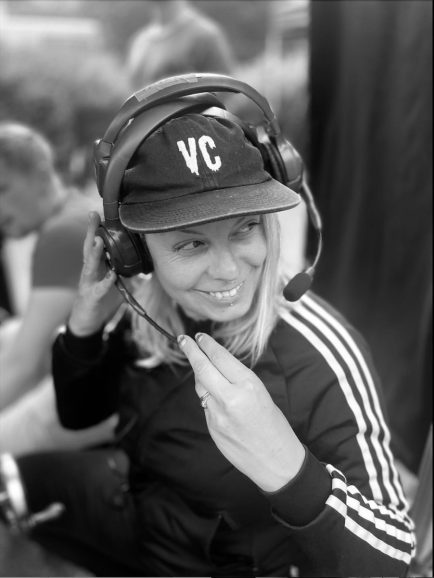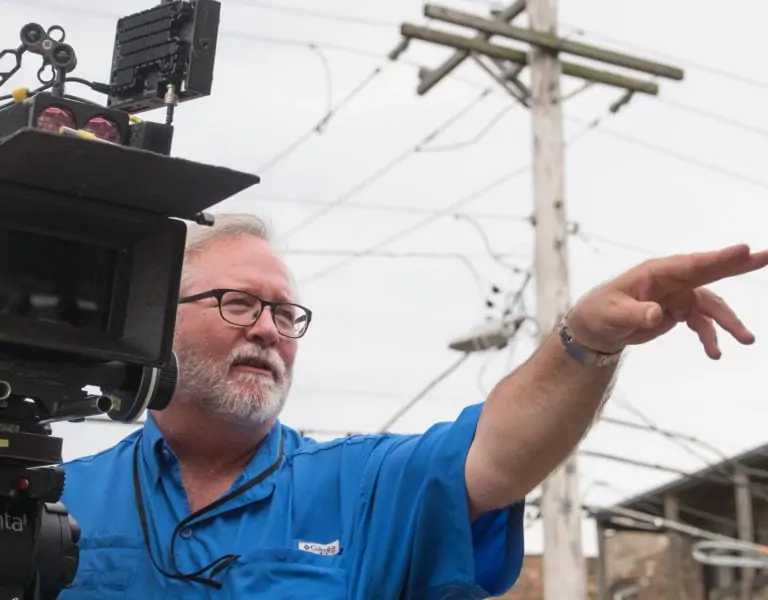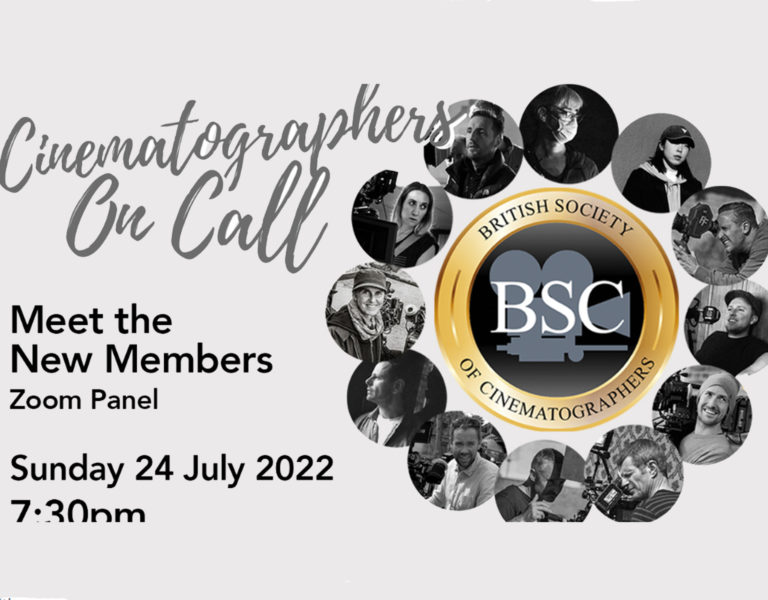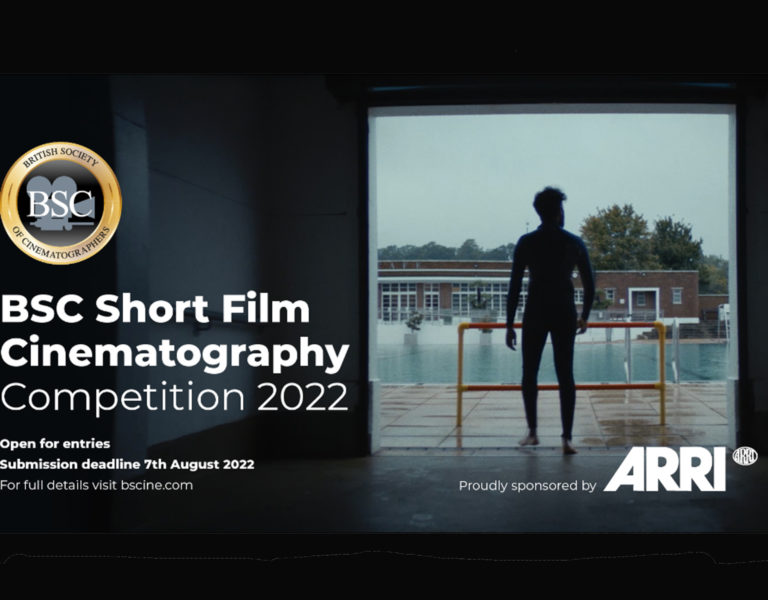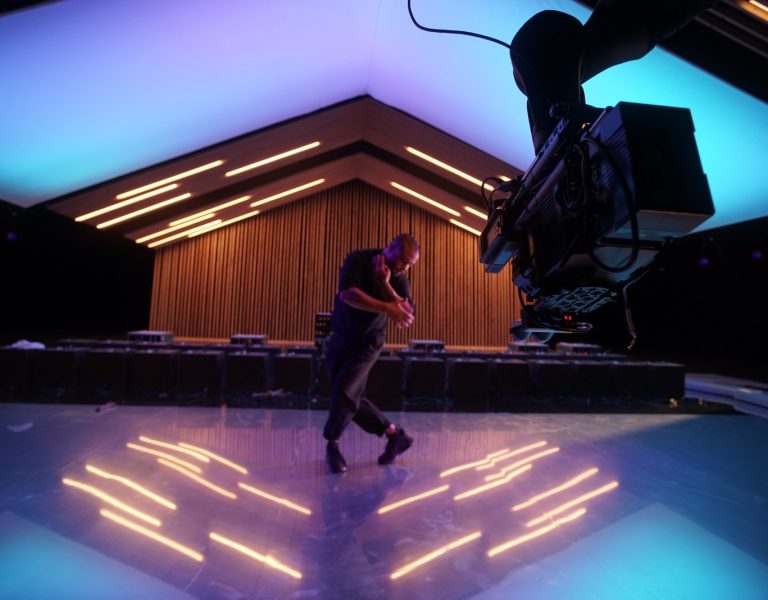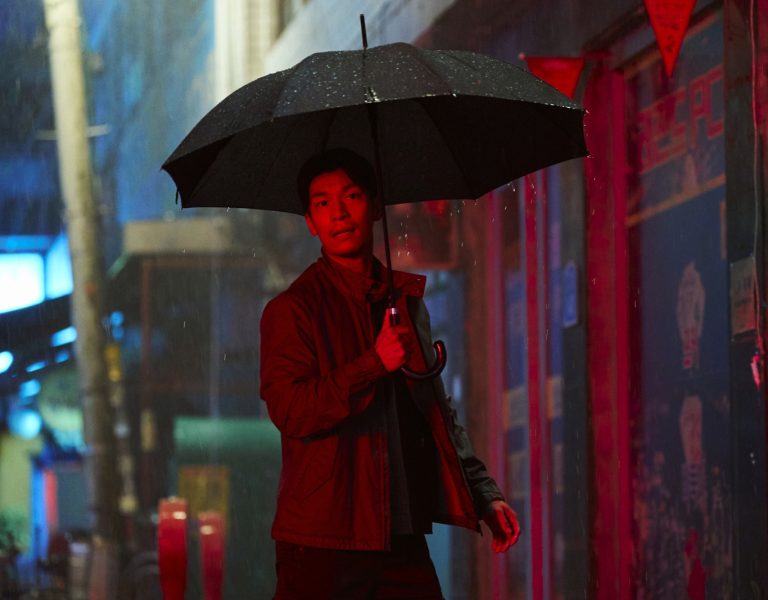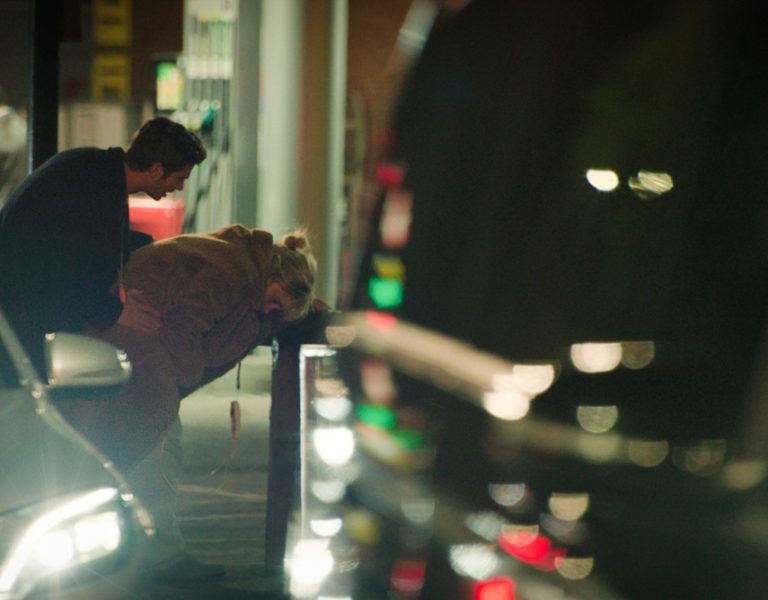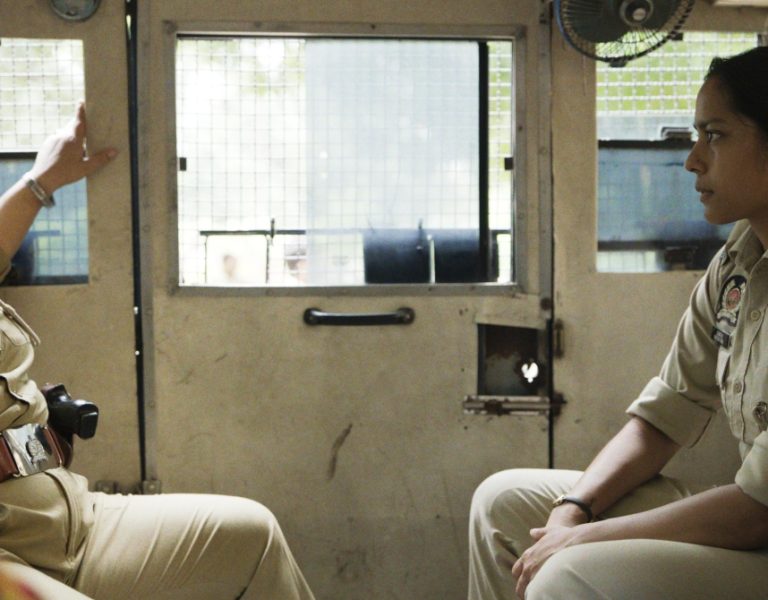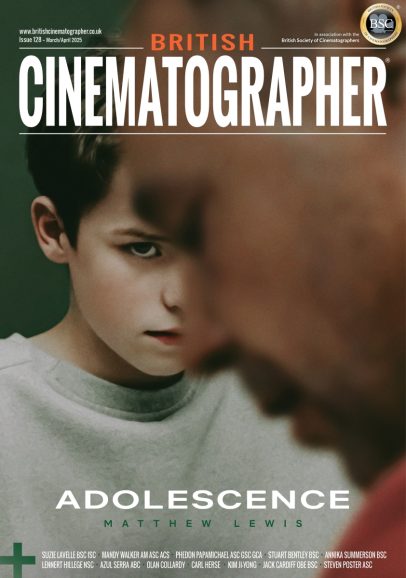The latest Full and Associate members have been announced. Find out about the talented cinematographers and camera operators who have been invited to join the society by reading on!
Adam Gillham BSC
Credits: A Gentleman in Moscow, The Man Who Fell to Earth, I May Destroy You
Training/education: I started out as a camera assistant with aerial cinematographer Peter Allwork BSC. Although I learnt the basics of assisting on film, this was an eye-opening time – we would fly in to join the main unit of a film, spend a day shooting the aerial sequences and then leave. I spent two years flying around while planning a way to become part of those film crews we left on the ground. Eventually, on the film A Kiss Before Dying, I met the loader Mark Milsome who helped me make up my mind to go freelance, first as a focus puller then as an operator before becoming a DP.
Influence and impact: The original TV series Das Boot was a revelation. Wolfgang Peterson and cinematographer Jost Vacano ASC BVK created an atmosphere on the U-boat that makes this series a lesson in how to use the camera to immerse the audience. Breakthroughs in camera design and operating are rare but Vacano developed the remote lens control that allowed the camera to rush handheld through the narrow hatches of the U-boat. It was one of the series from the 1980s, along with The Singing Detective and others, that I feel elevated TV drama to its present position at the forefront of technical and creative innovation.
Life lessons: Every move from one grade to the next has been a steep learning curve. The one for which I was least prepared was the move from aerial assistant, where the focus is generally set at short infinity, to focus puller. I think that focus-pulling remains the most demanding job in the camera department, and the most terrifying in low light, with handheld cameras and actors working without marks a common scenario. A grip I worked with often said that I was the only person he’d met with “clenched hair”. (I found out later this is a quote from The Odd Couple).
Challenges and learning: A recent challenge has been adapting to the increase in scale, both in terms of budget and the size of the sets, brought about by the involvement of the American studios in British TV production. My way of dealing with this has been to surround myself with the best, most inventive gaffers, best boys and riggers.
Future trends: The next decade will see large format 65mm digital cameras and lenses become more accessible for cinematographers. Film is also making a comeback. Both are exciting developments. However neither will mean better productions unless the scripts are distinctive and filmmakers are prepared to take risks.
Collaboration: Wojciech Scepel is a Polish DP who I operated for over several projects, including Any Human Heart, and who scrutinised every frame. I knew that if I was in any way inaccurate on a take then I’d hear about it as soon as it was over. Although I questioned his criticisms at the time, I learnt from him that precise operating and cinematography are inseparable.
Technical innovation: The last project I shot was almost entirely lit with LED. I can’t imagine being able to do this successfully until now, which is a significant step towards a more sustainable approach.
BSC membership: Becoming a member of the BSC means feeling a sense of connection, both to contemporary cinematographers and with a tradition that runs from newly elected members through to the great names of British cinematography. For me its value has to do also with the brilliant cinematographers and administrators who are prepared to give up their time to ensure the society runs smoothly and continues to promote this feeling of connection.
Words of wisdom: Don’t worry about making mistakes, but don’t drop the cases marked fragile.
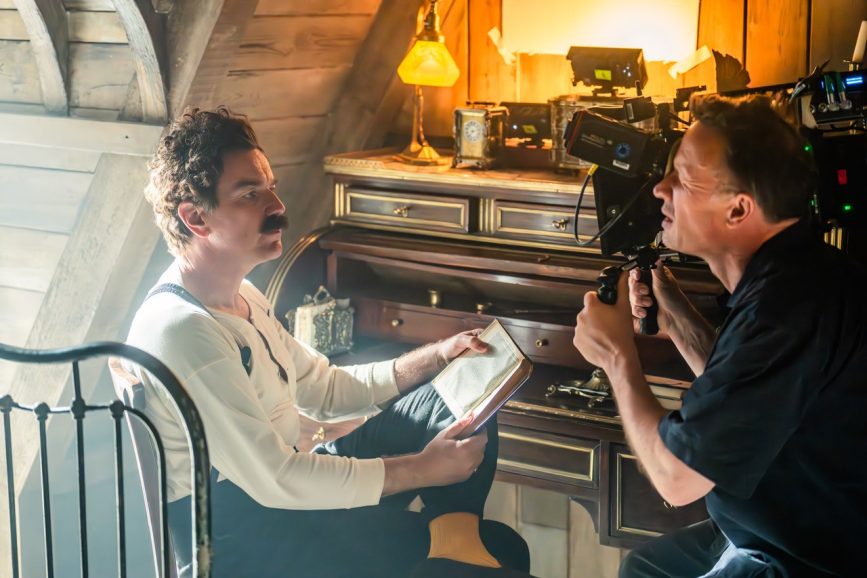
–
Ben Fordesman BSC
Selected credits: Saint Maud, End of the F**king World, Love Lies Bleeding, Name Me Lawand, The Thing with Feathers
Training/education: City and Guilds Electrical Installation (electrician).
Influence and impact: Carol, shot by Ed Lachman ASC, is outrageously beautiful. It has a painterly emotional quality to the image. Despite being a relatively modern film, it captures an aesthetic so deeply rooted in the past. I also love the photographic nod towards Helen Levitt and Saul Leiter and have unashamedly referenced this film into my work on many occasions.
Life lessons: In 2008, I was a fledgling gaffer on a music video for Elbow, a band I was really into and it was a big deal for me at the time. Unfortunately, I couldn’t attend the technical recce, and on the morning of the shoot, a couple of hours outside London, we hit a major snag: our generator truck was at least 12 times too large for the entrance to the location. That was on me. The solution wasn’t pretty—after some nervous head-scratching and the kindness of a local farmer who let us park the oversized genny on his land, we ran extra cable across two more farmers’ fields to reach the set. That day, I learned two important lessons: (A) always attend a recce and (B) maybe I should focus more on becoming a cinematographer. But mostly (A).
Challenges and learning: I didn’t attend film school. Instead, I worked my way up through the lighting department first starting as an electrician and then a gaffer. The transition to becoming a genuine DP was at times challenging. Particularly without a solid background in cameras. However, things escalated quickly for me. I went from shooting chill music videos on a Canon 5D to being offered opportunities to shoot on 16mm and 35mm. Naturally, I seized every chance, but shooting film for the first time with a full team behind me at first, was nerve wracking. I felt like an imposter at times, but I’m a firm believer in endless prep and testing until I feel somewhat ready to try something new.
Future trends: I really don’t know. There is the looming threat of AI but I have good faith in humanity to make the right choice. I am shooting more projects on film again, the analogue process excites me, that feeling never gets old.
Collaboration: My first feature film with Rose Glass on Saint Maud was incredibly enjoyable. Rose was mostly referential to artwork and literature, she’s never the slightest bit derivative. While it’s impossible to say other films didn’t have an influence on us, it felt like for the first time I was able to explore a different space to dream up ideas, and embrace magical realism.
Technical innovation: I am a little old school in my approach, it took me a while to finally accept LED, now its unthinkable to work without that technology
BSC membership: I really value the sense of community. As a fledging cinematographer it’s easy to feel isolated, so it’s an incredible honour to be among real cinema heroes. I honestly believe without the generosity of other cinematographers I wouldn’t have a career. So I see my position to show up, and support the next generation of cinematographers.
Words of wisdom: Shoot as much as you can, embrace the highs and lows, and enjoy the journey.
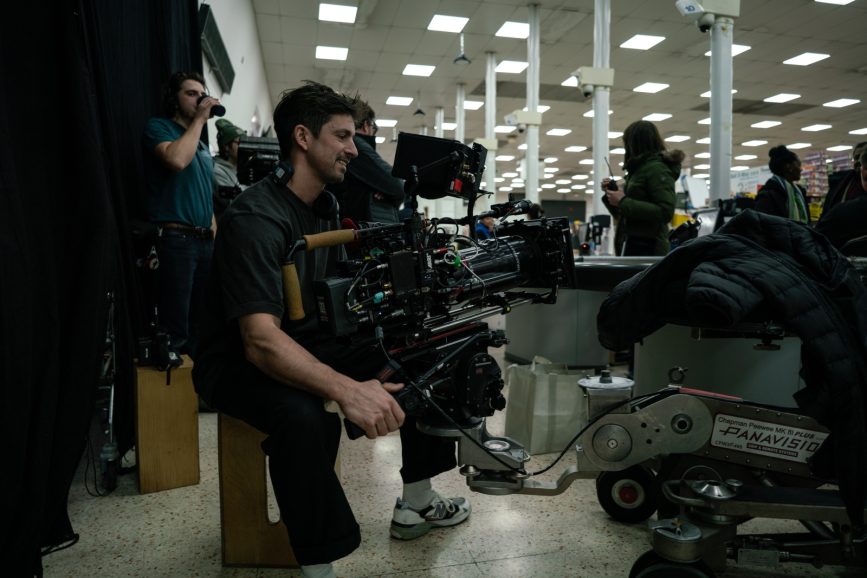
–
Birgit Bebe Dierken BSC
Selected Credits: Director of photography: Midas Man, Sexy Beast (TV series), Doctor Jekyll, Agatha and the Midnight Murders, Origin (episodes three and four), Bridgerton (prep DP), Minamata (second unit) Troy: Fall of a City (stunt and second unit), focus puller on:
Blood Diamond, Bourne Ultimatum, United 93, Inglorious Basterds, Anonymous, Hugo, V for Vendetta
Training/education: When I started, there were only a few film schools in the world, and without the internet and raised in a little village, I had no way of knowing about them. By the time I did, I was already over 27 and no longer eligible to apply. So instead, I worked my way up through the ranks, spending 18 years as a focus puller—essentially attending film school for two decades.
Influence and impact: Beyond the countless remarkable films and projects I could mention, I want to express my gratitude to a few visionary filmmakers who have shaped my journey in one way or another:
Andrew McDonnell, Benoit Delhomme AFC, Harvey Harrison BSC, Klemens Becker, Paul Greengrass, Ed Zwick, Bella Halben, Robert Richardson ASC and the Wachowskis. Each of them has left an indelible mark on my craft, whether through their artistry, ingenuity, or sheer passion for cinema.
Collaboration: A more recent moment came while working with director and showrunner Michael Caleo on Sexy Beast for Paramount+. We were prepping to film Teddy Bass’s party, a scene that needed to feel over-the-top, slightly vulgar, sexy and decadent. The challenge? Our location, a grand old manor house, was drenched in an uninspiring shade of magnolia. I suggested painting it red, but the art department didn’t have time to paint and repaint, as the space was booked immediately after our shoot. With very little time to prep, we had to improvise. As a last resort, we ordered sheets of thin, glossy red plastic and draped them over everything—like a Christo installation, but in red. Very ‘90s. The transformation was striking; it completely shifted the mood of the space and eventually the show. A shame it’s so bad for the environment, I’ve always had a soft spot for the look of plastic.
Technical innovation: Maybe because I spent so many years as a focus puller, I’ve always been drawn to new innovations and glass. I absolutely love it. Recently, I tested a 3D rig for a dry for wet sequence with a long dialogue scene, where one camera ran at 200fps while the other stayed at 25fps. The technical challenge was fascinating. I’ve also started exploring Unreal Engine, constantly looking for exciting possibilities. It feels a bit like discovering new words in a universal language, expanding the vocabulary of storytelling.
BSC membership: This is a huge milestone for me, having spent so many years working in camera. I never imagined it would be possible for me to step into this role as a woman DP. I’m deeply honoured to be part of an organisation filled with such outstanding talent and it is so nice to see greater diversity being recognised and I’m excited for what’s to come.
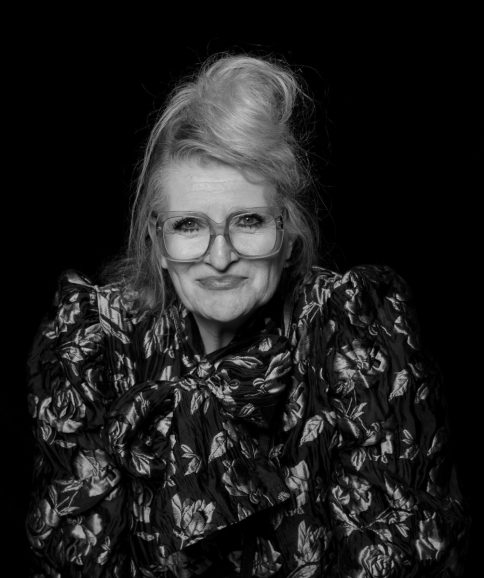
–
Ed Clark ACO Assoc. BSC
Selected credits: Black Mirror, Scoop, SAS Rogue Heroes, Good Omens, Normal People
Training/education: Initially trained in anthropology, I gravitated towards documentary film before changing tracks to drama when I joined BBC Birmingham. Here I had the good fortune to assist some wonderful operators who took the time to impart their advice, tips and training.
Influence and impact: I love Robby Müller NSC BVK’s work in films like Paris Texas and Down by Law. The imagery is so moving yet ambiguous, unusual in its perspective and simplicity. It reminds me not to overcomplicate and to try to avoid the obvious.
Life lessons: Walking the line of how to be on set, learning how to help, listen, collaborate and manage sometimes differing points of view. As I’ve got more experienced I have learnt to listen more and talk less, in order to get on the wavelength of the creative team. Also to learn not to overcomplicate shots, that mood and tone, the feeling of a shot is often best expressed in the simplest move possible. Mistakes, hopefully not too costly ones, will happen and help shape your instincts for the future.
Challenges and learning: Learning to live with the dichotomy of being freelance, your own boss to some extent while at the same time being totally powerless when six months of work disappears overnight. Then balancing this insecurity with family, and long stints away from home, having to pass on opportunities and make peace with the what ifs?
Future trends: Better and smaller gimbals allowing more flexibility and opportunity for movement. I hope we’ll see more opportunity for under-represented groups to get into the camera department and ultimately operating. My concern is that we need a more structured educational system to enable that positive movement.
Collaboration: The first series of SAS Rogue Heroes with Stephan Pehrsson BSC, it was about finding the right tone and energy on a limited budget, with limited resources and in a harsh environment. It was a get your hands dirty visceral experience, and there was just something about composing anamorphic shots in the desert.
BSC membership: It means a great deal to be made Associate BSC, to be amongst such inspiring filmmakers, many of whom I’ve long looked up to. It’s a huge honour.
Words of wisdom: My advice for new or aspiring operators would be that all experience is valuable. Practice your technical skills until they become part of your creative intuition. This helps you to be light on your feet, more open to ideas and able to improvise. Enjoy it, there’s no better feeling than when it all comes together.
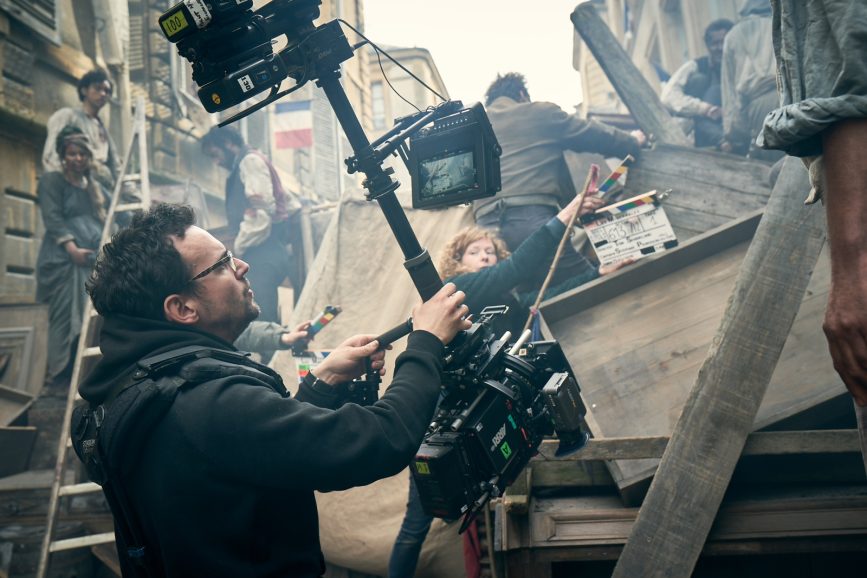
–
Jonathan “Chunky” Richmond Assoc. BSC
Training/education: My enrolment in the camera dept was as a camera loader, aged 18. I worked my way up through the ranks to focus puller, which I maintained for 16 years before becoming an operator. I think focus pulling is one of the hardest jobs on a film set, and in making the jump from pulling focus to operating I went from the hardest, to what I consider the most fulfilling, job on set.
Influence and impact: As a focus puller the majority of my work was with my brother George Richmond BSC when he was an operator. His knowledge and wisdom that he passed on to me still stands today. One film in particular that stands out is Children of Men (dir. Alfonso Cuarón, DP Emmanuel Lubeski ASC AMC). The way in which the film was shot pushed boundaries within visual storytelling. As a focus puller, this is my proudest achievement.
Life lessons: Working every day within a highly intense, ever demanding, fast-paced environment, whilst still respecting the many different personalities you find yourself working alongside.
Challenges and learning: Without doubt learning to be a proficient Steadicam operator. I still remember doing the course on the first day and thinking to myself how am I going to master this art – 10,000 hours will get you there I promise!
Future trends: Film has always evolved and will continue to do so. The pace is picking up speed like never before. I embrace all of it and look forward to seeing what comes next.
Collaboration: My most memorable collaboration would be with Cinematographer Fraser Taggart on Mission Impossible 7 and 8. His constant support throughout kept me going as did his patience and favourable eye. Operating for Christopher McQuarrie, the director of Mission 7 and 8, has been a unique experience. It’s rare to find yourself spending five years framing for the same director, and as with every job, the relationship evolved, as did the nature of shooting. Incorporating conventional, aerial and underwater setups, each demanded their own unique approach.
Technical innovation: The ever-evolving way lights are changing, the advancements in gimbal stabilised heads, and wireless technology particularly camera wise, and heating on stages.
BSC membership: It means an immense amount to me to be part of a society that has produced some of the finest cinematographs in world cinema.
Words of wisdom: Work hard, don’t let anyone hold you back, and remember that respect is earned.
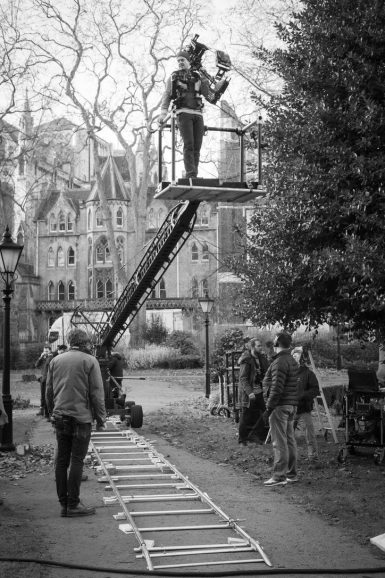
–
Justin Brown BSC
Selected credits: The End of the F***ing world, His Dark Materials, I Am Not Okay With This, Hello Tomorrow, Karate Kid
Training/education: Film Production at The Arts Institute at Bournemouth.
Influence and impact: Within the space of a few months in 2003 I watched Harris Savides ASC lens Elephant and Birth, Lance Acord ASC lens Lost in Translation and Conrad L Hall ASC lens Road to Perdition. These four films all released within such a short window, all so different in style, colour palette and aspect ratio to this day are constant frames of reference and the reminder that we as cinematographers have our own unique story to tell.
Challenges and learning: I would say being away from family on long narrative projects is a collective challenge we as cinematographers face. So far, the only way I’ve been able to cope with this is by ensuring that, every three weeks, no matter what, we see each other.
Future trends: I hope I’m wrong, but I would say the only concern I have over the next decade is AI might take away the large wides and establishing shots we currently film in narrative projects. AI actors will never resonate with the audience, so I think we will always be filming actors in sets. The expensive wides with doubles is something I could see being forced into AI by studios.
Technical innovation: Xy colour science and Xy colour metering on set is something my gaffer Steve Finberg recently brought to my attention and since I started using it I can’t see I will ever go back.
BSC membership: As a film student, becoming a member of the BSC represented the ultimate recognition for a cinematographer—an esteemed standard set by peers and fellow artists. I am truly honoured to now be part of such a distinguished group of talented DPs.
Words of wisdom: Never give up.
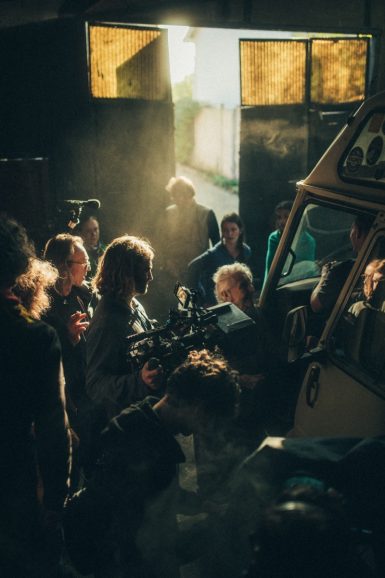
-
Mark Wolf BSC
Selected Credits: Lord of the Flies, Everything’s Going to be Great, Long Day’s Journey into Night, Cottontail, Stonehouse, Help, Time, Des, Hannah, Planet Earth (series one), Blue Planet (series one)
Training/education: Since I was six years old photography has been the one thing that has constantly kept me excited. I was lucky to have a dad who loved photography. He collected cameras and had a darkroom so I was able to play with Nikons, Hasselblads, 10×8 large format cameras and develop and print my own pictures. When I left school I worked in a film lab then as an assistant to advertising and fashion photographers in London. As I got into film I worked as a production runner and then clapper loader. But I had a thirst for adventure and education so I went to Australia to do a degree in Marine Biology. After four years I came back to the UK and continued working as camera assistant in documentaries and focus puller on feature films and TV dramas.
Life lessons: Be yourself – take inspiration from others but find your own visual inspirations and go for it. Be patient and determined – it can take a long time to become a DP, there will be many ups and downs along the way. The ups and downs never end!
Influence and impact: As a little boy I loved to watch Jacques Cousteau films and read all his books. When I was seven years old I met him. Wearing his ever-present red woolen hat, he looked down at me from what seemed like a great height, shook my hand and spoke to me. Alas I couldn’t understand French but he was very kind and I remember his huge hands. It was like meeting a god.
Challenges and learning: The pressures on a DP when shooting feature films and TV dramas can be intense but nothing compares to what I had to face when I started my career as a wildlife cameraman. Much of the time was spent just figuring out how to survive; how to feed and shelter oneself before even having time to look through the lens. I have been hospitalised with tropical diseases, had many death-defying moments and have been held at gun point. Once in the Amazon whilst crossing a river in knee-deep water my assistant was attacked by a crocodile which bit off his left foot, leaving it hanging by a tendon. I think of these times when things become tense – on a drama set you’re never more than two minutes away from a very kind assistant bringing you a lovely hot cup of tea and a biscuit.
Most recent challenge: I received a call from a producer I previously worked with asking me if I could start shooting a feature film immediately. It was Eugene O’Neill’s Long Day’s Journey into Night with Ed Harris and Jessica Lange. I joined and had zero days of prep. After successfully shooting the film, I felt I could do anything.
Collaboration: For me, one of the greatest pleasures is having a fulfilling collaborative shared experience with the director. There have been many of these along the way, I cannot single one out.
Technical Innovation: At the moment I’m enjoying the profusion of lenses and the technical innovations the Chinese manufacturers have to offer. Although recently there has been such a proliferation of lenses that I am beginning to suffer from lens-choice fatigue!
BSC membership: It’s a great feeling to be recognised by your peers. I have always looked up to BSC DPs. It’s like a career milestone but I feel there’s so much further to go!
Words of wisdom: There will always be those with discouraging words, telling you how difficult it is to become a DP. Don’t listen to them. If you want it enough you will be successful. Don’t feel you have to go with the herd and do things a particular way just because someone says that’s how it’s normally done. Do your own thing. Who wants to be normal!
Be kind to your crew; they’re all there to help you.
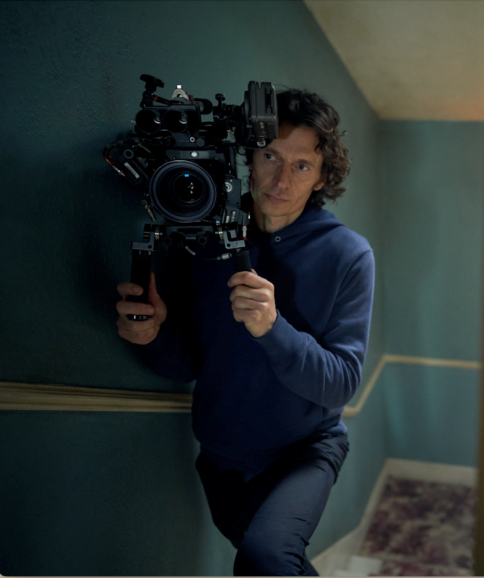
–
Sam Care BSC
Selected credits: Dr Who, Nolly, Sherwood, Wet Season, Born to Kill
Training/education: University of Westminster – BA (Hons) Film & TV Production. National Film & Television School – MA in Cinematography
Influence and impact: During my most impressionable years as a young aspiring filmmaker the films of Stanley Kubrick and Paul Thomas Anderson had the most influence over me. They both make pure cinema. Paths of Glory, Dr. Strangelove, Barry Lyndon and 2001: A Space Odyssey are my favourites. Each time you see them they are different films as you have advanced as a filmmaker and are seeing them on new levels. PTA’s early work Boogie Nights, Magnolia, Punch Drunk Love and of course the masterpiece There Will Be Blood are a constant source of inspiration. I love his unique and often surprising mise-en-scène, his powerful and ambitious use of the medium as well as the wonderful characters within his films.
Life lessons: It was probably directly after film school, when I was thrown straight into being a professional cinematographer. I had to navigate some of the elements that are hard to teach you, such as working under pressure and at pace, the politics of the set and the production and the people skills required to work with and manage a large number of crew.
Challenges and learning: Shooting for 24 hours straight with two 20min food breaks on the feature film Wet Season. We had run out of shooting time in Malaysia because of a tropical thunderstorm that had cost us a day in our schedule. We were in a crisis meeting with the producers. We had two days of filming left but only one day remaining in the country. I said: “How are we going to do this?” They replied: “We’ll shoot two days in one.” It had been a grueling shoot, so at that point I embraced the final challenge and enjoyed it immensely! The sense of satisfaction I felt at dawn when we wrapped is still unparalleled to this day.
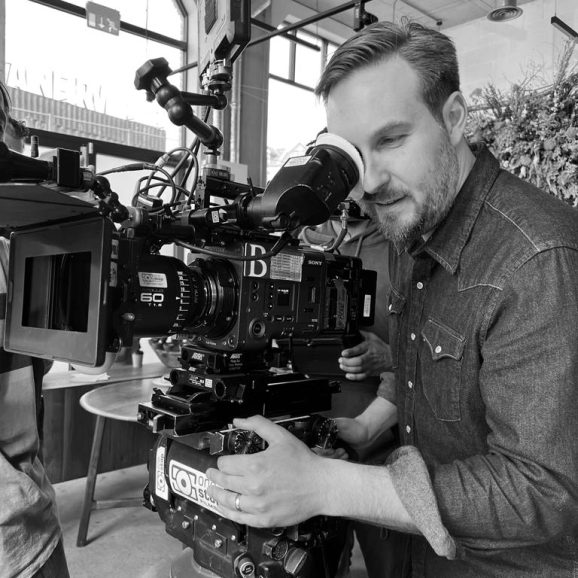
–
Steve Annis BSC
Selected credits: Kissing Candice, I Am Mother, Foundation, Inside, I’m a Virgo, The Crow, We Bury the Dead
Training/education: Studied at the Surrey Institute of Art and Design but failed to be a Bachelor of Arts because I was focus-pulling on too many short films for the NFTS.
Influence and impact: I watched a music video shot by DP Tom Townsend in 2016 called “Black and White Town”. The band was the Doves and the director was Lynn Ramsey. She’d already shown us Gasman and Ratcatcher, but this video fox was something else. Council estate kids from inner city Glasgow bored and frustrated to the heavy drum of the song. And it blew my mind. Robbie Ryan BSC ISC did a similar thing with the Dan Wolfe directed “Iron Sky” by singer Paolo Nutini. And watching American Graffiti was joyfully confusing as a child in the early ‘80s.
Life lessons: How to turn the energy and madness of “passion” into to something approaching controlled calmness and professionalism so as not to scare folks away. Took me a while.
Challenges and learning: Choosing cash over art. Choosing art over cash. Covid. Losing jobs. Navigating and beating luck without even knowing it was happening.
Future trends: Maybe I’m wrong or just being too optimistic but I think it will be the same. The camera department itself hasn’t really changed that much since I began focusing pulling. Lots more buttons and gears and cables for sure but the basics are still the same just like the basics of airplanes are still the same. Wings and engines. What excites me is when technology evolves to truly help us day to day. I remember the first time I used an Astera Tube was in NYC on a music video. What could have taken six hours to clamp and cable and fit took one hour with one guy and single scissor lift with 12 tubes and some magnets.
Collaboration: Two directors who really let me play and find myself over my infant years were Vince Haycock and Aoife McArdle. They both just let me do my thing in worlds they had created with magnificent casting and writing and locations…and most importantly, no money. This meant no one saying it’s too dark or too this or too that.
BSC membership: Following in the footsteps of great DPs like Oliver Stapleton BSC, Chris Menges BSC and Douglas Slocombe OBE ASC BSC.
Words of wisdom: Learn how to create luck. Do everything from sweeping leaves to painting walls if it means just getting on a film set
Listen to everyone. Listen to no one. Watch loads and loads and loads of music videos and commercials. Watch even more films
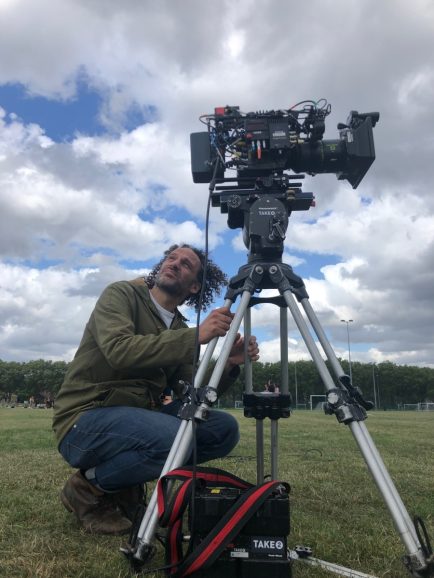
–
Vanessa Whyte BSC
Selected credits: Ted Lasso, The Completely Made-Up Adventures of Dick Turpin, A Confession, Murdered for Being Different, There She Goes, Enterprice
Training/education:
Degree in History of Art at Cambridge University, Masters Degree in Cinematography at NFTS.
Influence and impact: Nic Roeg CBE BSC’s films as a cinematographer and a director were a huge influence on me as a teenager and really ignited my interest in filmmaking and cinematography specifically. I was lucky enough to interview him for my dissertation and I have always loved how wide-ranging his interests and influences were. In contemporary life, Chris Ross BSC is directly responsible for many opportunities and helping me climb the ladder and get into TV, for his support I am forever grateful.
Life lessons: Think through all the possibilities, be prepared and be ready to turn on a dime!
Challenges and learning: Juggling the work/family balance is the hardest part of the job – if anyone knows how to overcome it, let me know!
Technical innovation: I think with the rapidly changing technology in front of and behind the camera, it can be hard to keep up. AI, working on volumes, ever-evolving LED lighting – it’s exciting and daunting and I try to keep an open mind to all the possibilities.
BSC membership: It feels a bit strange to now be part of the ‘establishment’, having felt like an outlier for so long. I’m really excited to see the BSC evolve into a broader society that has actively sought out talent from outside what has been considered the usual pool. I’m really looking forward to being a part of the society.
Words of wisdom: It’s all about the work! Don’t worry about future aspirations of becoming a member, just try to do the best work you can and choose projects that inspire you and allow your personal creativity to flourish. The rest will follow.
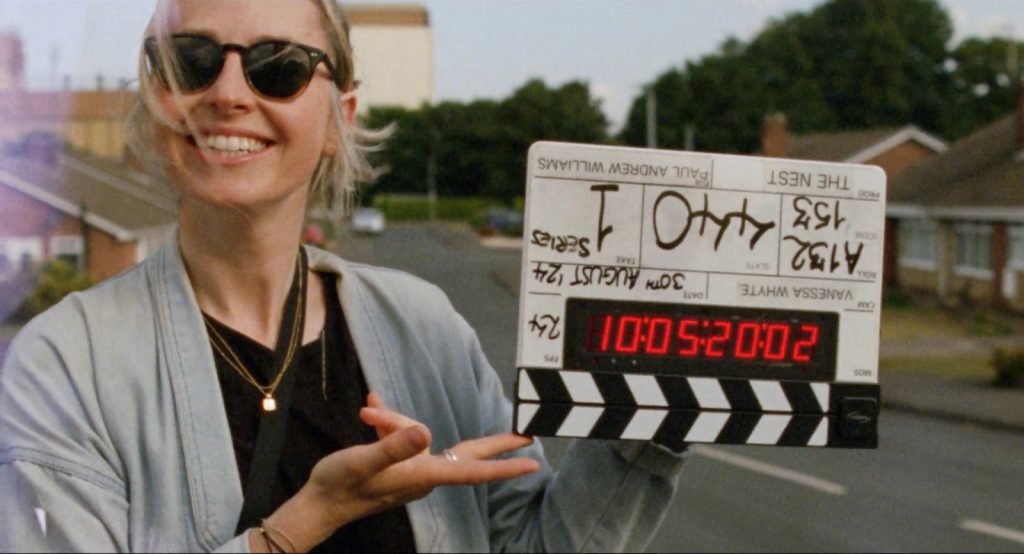
-
Rachel Clark BSC
Selected credits: CC Emily, Edge of Summer, I Am Ruth, Queenie, Pirates
Training/education: I didn’t go to film school. My training came through working on film sets. I started out as a runner, moving up through the camera department from trainee all through the grades to operator and DP. I came into the industry with a background in photography, anthropology and cultural studies. I’ve always had a camera in my hand, this is where my passion for image making first came from. I set up a dark room in my parents garden shed when I was about 16 and became obsessed. I was incredibly lucky to grow up near a City with a Photography Gallery (The Side Gallery, Newcastle Upon Tyne). I was introduced to many incredible photographers here, many who’s work I still reference today (Tish Murtha, Chris Killip).
Influence and impact: Both Andrea Arnold and Robbie Ryan BSC ISC have undoubtedly had an effect on me as a filmmaker and as a person. They taught me so much about storytelling, how to reach the very heart of something, what’s important to protect and what doesn’t matter at all. I have such respect and admiration for them both, and value the time I spent working on their sets very dearly. I carry many of the things I learnt from them in my heart every day at work.
Life lessons: Every day. Every time there’s a new challenge to overcome or a new scenario you haven’t been in before. I feel like we’re always learning, constantly, and that never stops. It’s one of the things I love the most about the work, aside from the creative aspect. The problem solving, the complicated scenarios or situations you find yourself in and the collaborative effect you make as a team to puzzle your way out of it.
Challenges and learning: I would say starting out in the beginning was very challenging, I didn’t know anyone who worked in the industry and had no idea where to even begin. It took a long time for me to get in, to meet people, form relationships, turn these connections into paid employment. It was very frustrating at times. I would often have long spells of unemployment and all I really wanted to do was work, to put the hours in, learn, improve.
One of the most challenging things about the industry is to keep the determination and fire in your belly against all the odds. We hear many, many more “no’s” than “yes’s” and it can be tough to stay focused and positive. We all experience this, so you learn over the years how to navigate it and how to stay creative and inspired in the in-between times.
More recently the challenge has been finding those special projects you really want to shoot. The ones that speak to you, that you connect with deeply and get excited about.
Collaboration: I feel like I’ve been lucky enough to have many memorable experiences on amazing films. As a cinematographer the projects I Am Ruth and Edge of Summer spring to mind. I Am Ruth is memorable as it was such an immersive project. There’s so much of myself in the camerawork that it feels deeply personal and entirely connects to me. It was a very physical experience and truly exhausting. I gave myself over completely to the process and the experience.
Edge of Summer was a special project. The director Lucy and I spent a whole summer together in Cornwall, willing this film into existence. It was a tiny independent film, an incredible script (written by Lucy) and with a very big heart full of ambition and hope for the film. I’m very proud of the film. We did everything we could to make it the best we could. To be nominated for Cinematography at Camerimage was a huge achievement and something I am so, so proud of.
Technical innovation: Technology changes so fast and we’re forever finding new ways to tell stories. This is what excites me. There are so many new ways to move a camera, so many smaller versions of cameras you can fit into weird and wonderful places. All the lens rehousing specialists that exist now and the beautiful old glass we’re rediscovering. The archive of vintage glass that’s resurfacing and being able to be used is thrilling and inspiring.
BSC membership: To have my work and career recognised by my peers is an honour. It’s not something I’d ever dreamed possible. To be able to stand as inspiration to others who follow behind me is something I find very humbling indeed.
Words of wisdom: Concentrate on your own path, your own voice, find out what’s important you. Approach everything with a good attitude and a strong work ethic. It’s hard work but it can be incredibly rewarding. Keep going and don’t give up.
